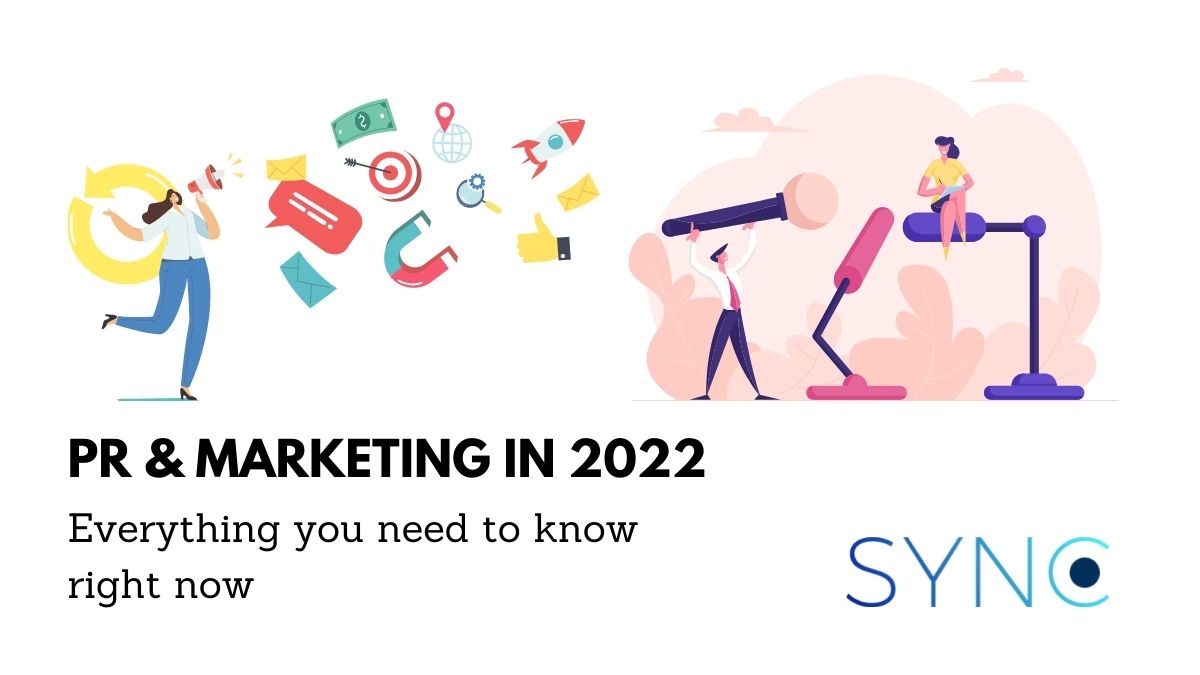Many people who do not work in the communications field don’t fully understand the difference between PR and marketing. While they are two aspects of a company that work for hand in hand and overlap, they are two distinct disciplines.
PR is the process of identifying, anticipating, and managing public opinion. Marketing is the process of identifying, predicting, and satisfying customer wants and needs.
As PR and marketing strategies grow and adapt, the lines between PR and marketing are becoming increasingly blurred, but each still has its own role in the promotion and success of a company.
But, what is public relations in marketing? And how does PR and marketing work relate to each other? In this blog, we discover how using public relations in marketing can build a better brand image.
For easy reference:
- Are PR and marketing not the same?
- The role of PR
- The role of marketing
- The difference between PR and marketing?
- Content creation in PR and marketing
Are PR and marketing not the same?
While PR focuses on the image of the company, marketing is about how to sell a product. In short, marketing concentrates on the microelements of promotion, such as the company’s advertising campaigns. Meanwhile, the PR team undertakes the macro tasks of building the brand image and connecting with the public and media.
The marketing and PR team work together to ensure that the message is on brand and disseminated to reach the target audience, but both have their own specific tasks and goals.
Another distinction between PR and Marketing lies in whether the publicity is paid or unpaid. Generally speaking, companies have to spend money on advertisements for them to be featured across an array of media platforms. Promotion from PR activities is better known as earned media, which is organically generated content that helps with branding.
The role of Public Relations

A public relations professional’s primary responsibility is to build and maintain relationships with the public and secure the brand image. They may have to juggle multiple media-facing duties from developing a media list of all the journalists and publications to building and maintaining good relationships between the client and the press while also coming up with angles for stories or articles and pitching them to the relevant people.
By creating a good working relationship with media sources, a PR manager can help to promote a strong brand image and limit damage when something does go wrong.
As part of the relationship with the journalists, a PR professional will organise and secure interview opportunities for the company to help maintain a positive brand image in print and online media. They are constantly working with the various media platforms to create a bond between the brand and the public, which helps to protect a brand if an issue arises. This relationship, therefore, reduces the amount of time, money and energy required when it comes to dealing with problems.
Some of the other responsibilities of a public relations professional include sharing information by writing and sending press releases and letters to media, government officials and the general public. These press releases help spread information about new products, services or developments while building and maintaining trust and respect with the public and key stakeholders.
The PR professional is generally in charge of producing media kits providing information about the company, product, service, or event. These kits typically include information about the company’s history, philosophy, products and services, and contact information and give journalists a snapshot of the brand, providing a background for any articles they may write.
As part of their role, the PR person at a firm may also attend networking events and conferences to build their clientele. They represent the company in public and promote them in person and through the written word.
READ MORE: Top 10 PR trends that brands should care about in 2022.
The role of marketing

Those who work in marketing hone in on how to increase the company’s sales, and they mainly work on creating good advertising campaigns and promotional content to aid this goal.
Marketing is the process of creating, communicating, delivering, and exchanging offerings that have value for customers and the process does not happen in a vacuum. It is a process that influences all aspects of an organisation and is involved in activities that help to create value for the consumer.
A marketing professional generally has the responsibility of developing marketing strategies, promotional campaigns, and designing any materials necessary for a company’s marketing efforts. They may also be responsible for managing the company’s marketing and advertising budget, learning about the brand’s strengths, weaknesses, opportunities and threats through a SWOT analysis and identifying the target demographics and market for its products and services.
When creating an advertising campaign in line with the company’s goals, they also ensure it is within the company’s budget and is aligned with the branding message that the company wishes to portray. This includes placing advertisements in magazines or newspapers or on various social media platforms relevant to the specific demographic sought by the company.
Producing advertising campaigns is a process that takes a lot of time and effort. It begins with a marketing strategy, which sets out the goal of the campaign. The plan is then translated into a message to be conveyed in the campaign, and the message becomes a creative concept as the idea behind the ad. They present the idea as a storyboard or a rough sketch before it becomes the finished ad.
What’s the difference between PR and marketing?
The main difference between marketing and public relations is that marketing promotes and sells a product. In contrast, public relations is the process of building and maintaining a favourable image.
Thanks to the integration of social media and online promotion into the marketing world in recent years, the two disciplines have started to converge and overlap more and more. They are both driven by a similar need to bring more attention to the company and its products or services. They do this by bringing more traffic to the website or sales funnels and generating sales leads while increasing brand awareness and engagement with the public.
Once, PR used to be mainly about press releases and dealing with print media. However, over the years, it has become necessary for PR professionals to pitch to all types of media, both print and digital, as they build brand awareness.
Modern-era PR professionals create media-worthy (or, newsworthy) narratives and content to generate publicity for brands. These activities also rely on marketing strategies and understanding the psychology behind consumer behaviour to identify the pain points faced by consumers, the USP(unique selling point) of the product or service and show how it can help consumers solve their problems.
Social media has become a pivotal tool for both PR and marketing professionals as they use it to promote products and the brand. Other important aspects include the implementation of SEO strategies and the creation of content that drives conversions through clicks.
READ MORE: Effective copywriting: how to craft your startup brand message in 2021.
Content creation in PR and marketing

While copywriters usually create advertising copy and are part of the marketing team, those in PR write content for the purpose of generating publicity regardless of advertisements. Copywriters curate short, targeted content for use in ads and social media.
The PR writers usually create longer content than those used for ads and try to engage the audience by giving the audiences’ the background story about the company while offering value. This content strategist aspect of the PR role is becoming essential in every company as consumers become more digitally savvy and seek out authentic content and brand connection.
While it is perfectly natural to have overlaps between the PR and marketing teams, they still must understand their roles. If you choose to work with a PR and a separate marketing agency, setting clear boundaries and targets will make it easier for each team to achieve their goals.
But how are public relations in marketing going to help you with your company’s branding? It is now essential that a company has a good relationship with the media and the public, complete with transparency and honesty; otherwise, the best marketing endeavours will be for nothing. Marketing activities are also fundamental to compelling storytelling in PR. The bottom line is: it’s hard for one to exist without the other.
Strong PR and marketing strategies can boost sales and protect a company from fallout when something goes wrong or a downturn in the market. Do you want to know how to create a strong PR strategy for your business? Speak to us at hello@syncpr.co today.

